With home design trends veering towards all things earthy and natural, it was only a matter of time before evergreen materials such as bamboo, wood, and cane were brought back into the spotlight. A prominent material seen everywhere from largescale lighting fixtures in commercial establishments to furniture in residential spaces is rattan. The tough material has found fancy among Indian designers who are using its flexible nature to craft furniture, decor artefacts, and installations. We track a few…
A decor artefact by The Green Collective
| Photo Credit:
Special Arrangement
The Green Collective, Assam
Launched in 2020 by Aakanksha Batra, the decor brand specialises in creating artefacts and furniture from cane/rattan, water hyacinth, pine needles, moonj grass, bamboo, etc. Crafted by artisans in the North East and Uttarakhand, the design studio’s highlights include multi-functional, handcrafted products such as placemats, trays, storage baskets, lanterns, among others. “The brand is driven by artisans who are part of the journey from seed to sea, from those who harvest the cane, to those who transport it to the city, and especially those who eventually create the pieces,” says the founder, whose rattan edit launched for Diwali last year was the brand’s “first full experiment combining rattan with metal”. It comprised a bar set, a pair of cake knives, a trio of cheese knives, metal napkin rings with rattan weaving, and a two-tier fruit/ dessert stand with a metal rod. “We also launched a parallel collection of our bestsellers in black stain–tissue boxes, multi-utility holders, coasters, etc.,” says Batra, who went on to launch capsule edits in rattan for Valentine’s Day with heart-shaped boxes, a hurricane lantern with a heart centre, and a heart-shaped sun chime.
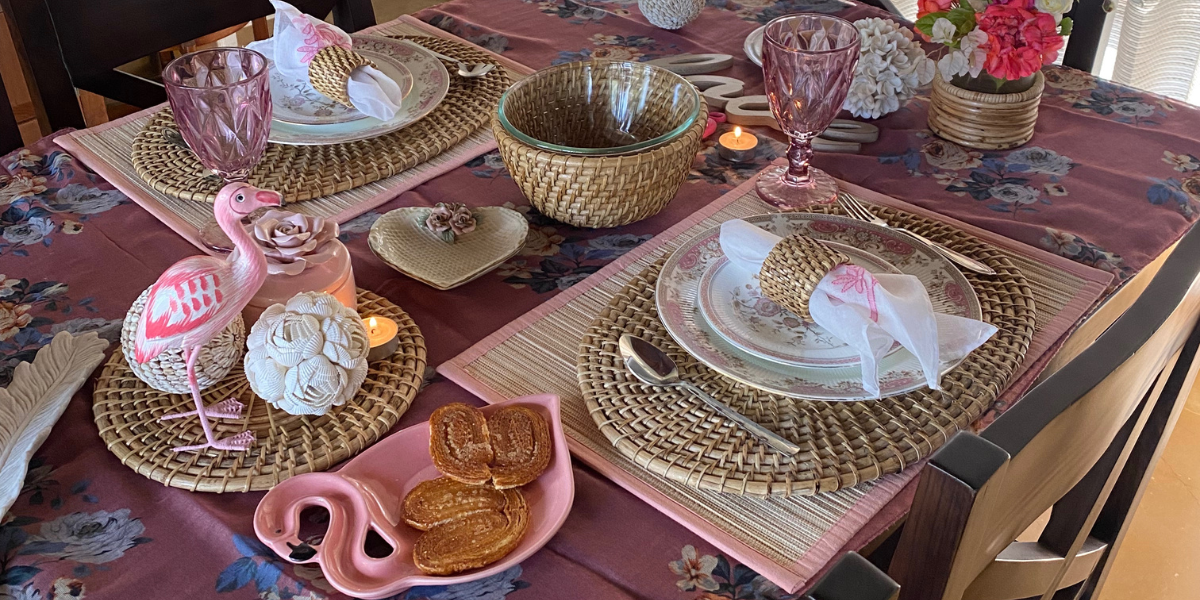
Tableware by The Green Collective
| Photo Credit:
Special Arrangement
Batra, 36, believes that one of the biggest USPs of her firm is the community of women artisans. “The effort has been to not just revive and preserve the dying art of caning, but also to motivate and mobilise more women from the cane artisan cluster to be directly involved in creating products for the brand, in what has traditionally been a male-dominated handicraft space. ”Rattan, a renewable vine that grows with the support of forest trees, is used to craft everything from large planters to table decor at The Green Collective. What makes working with rattan unique, besides its earth-friendliness, “is the fact that it can be bent into any shape possible, which is how the same material can be used for making everything from quirky tableware to capacious storage baskets and sturdy furniture,” says Batra, adding that rattan also takes on dyes and colours quite easily, making it a creative material to work with.
A single piece from rattan can take from a few hours to a few weeks, depending on the size of the product, its design complexity, and weather conditions, she says. “Grasses are challenging to work with, and being natural materials, they have similar issues. For instance, they are normally picked from native forest areas rather than being farmed, and so are quite susceptible to disease or insects. Which is why the post-harvest drying and treatment of these materials is crucial.”
thegreencollective.in
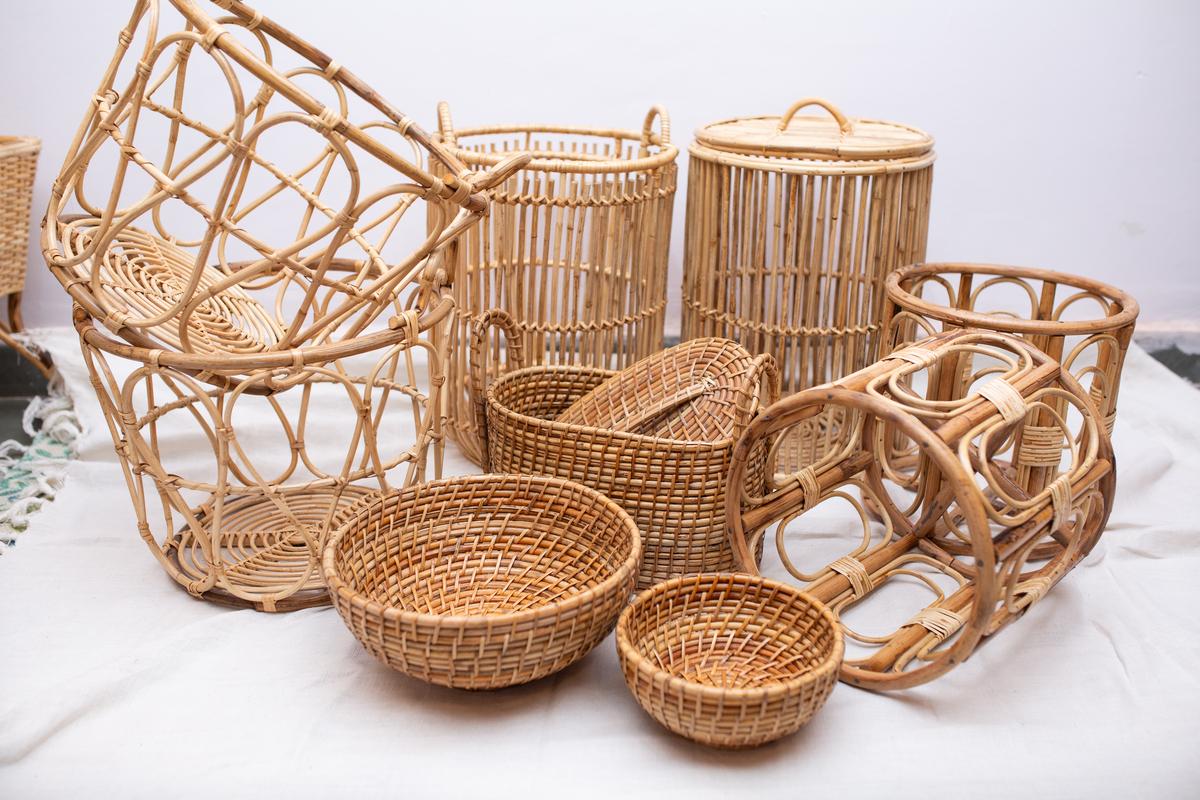
Rattan artefacts crafted at Makon Home
| Photo Credit:
Special Arrangement
Makon Home, Manipur
During the pandemic years, decor blogger and product stylist Pooja Moirangthem realised a rising demand for home decor products “as people spent more time at home and sought to create comfortable and inspiring living spaces”. “There was a growing desire for unique, handmade items, and many people started to appreciate the importance of supporting small businesses and artisans who were struggling due to the pandemic,” says Pooja who launched Makon Home in 2021 with home furnishings, decor and furniture crafted by artisans and women weavers from the North East.
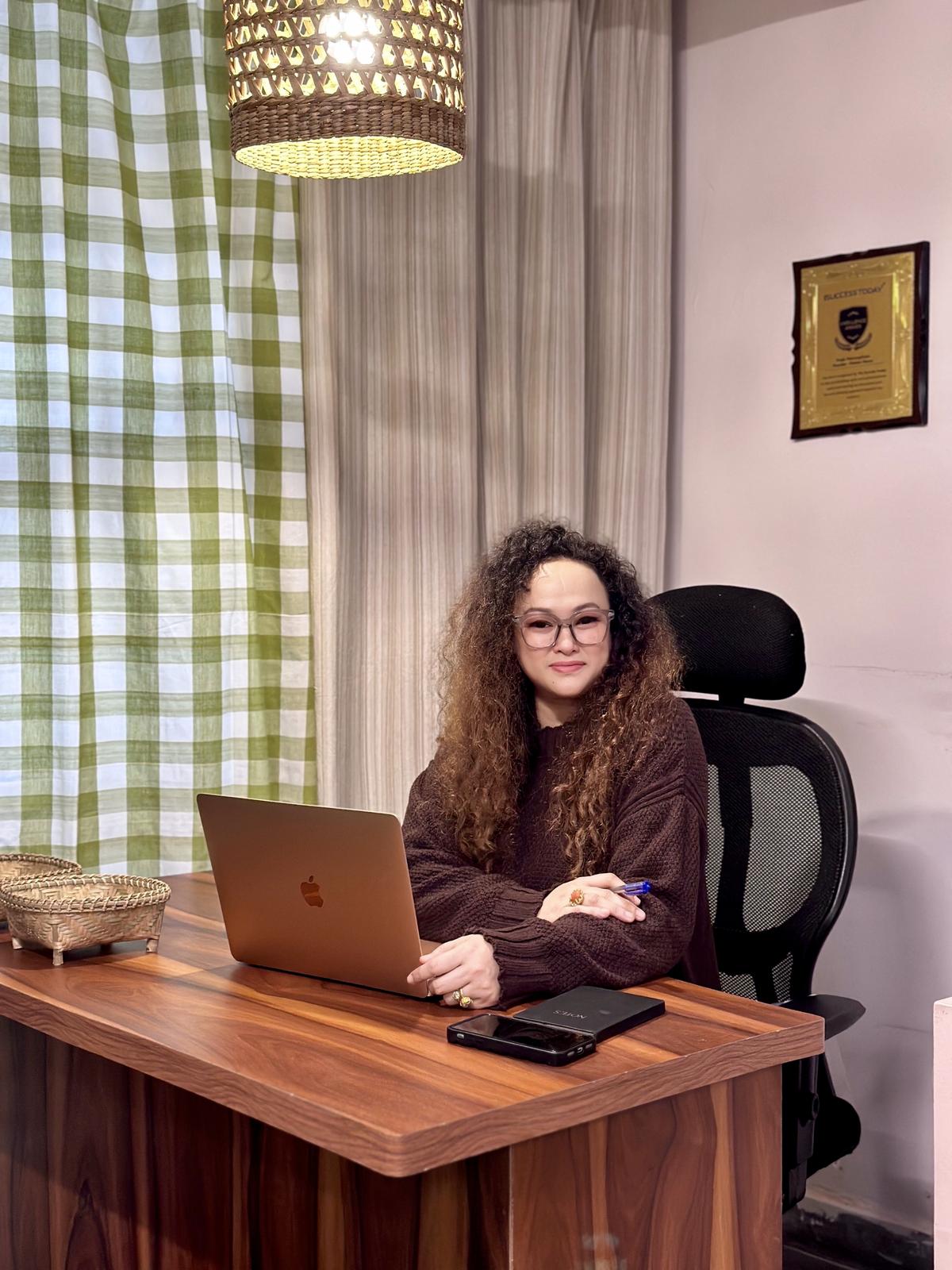
Pooja Moirangthem
| Photo Credit:
Special Arrangement
The brand’s catalogue comprises trays, planters, laundry baskets, and even stools, day beds, swings, bar stools, coffee tables, and more crafted using cane, rattan, water hyacinth grass, kouna grass, and handloom cotton. Assam cane and rattan are distinct due to their superior quality, flexibility, and strength, says Moirangthem, adding, “Assam cane is particularly prized for its smooth, glossy finish, which allows artisans to create intricate and detailed weaves. Meanwhile, Assam rattan is known for its robustness and pliability, enabling the creation of sturdy yet lightweight pieces.”
Recent launches with rattan include a range of Pinterest-inspired furniture such as day beds, a Bali lounge nest chair, Papasan chair, resort lounge chairs, vintage dressing tables, and doll houses. Handcrafting a single piece of furniture or home decor from cane and rattan takes anywhere from several days to a few weeks. “Smaller items, like baskets or simple decor pieces, can be completed in a few days, whereas larger and more intricate pieces of furniture, such as chairs, tables, or detailed wall art, may require a few weeks,” says Moirangthem, adding that the rise of bohemian, coastal, and tropical interior design styles, which emphasise natural materials and relaxed aesthetics, has boosted the demand for cane and rattan products. “Increased production and better distribution networks have helped maintain competitive pricing, making these products more affordable,” she says.
A sofa at Makon Home
| Photo Credit:
Special Arrangement
While rattan is a strong material, working with it requires skill to bend and shape them without breaking. “Bamboo can be more rigid, making it harder to bend, but it is easier to cut and join it without the risk of splintering. Cane and rattan need extensive processing to remove the outer bark and treat the material to prevent pest infestations. Specialised tools are often needed for weaving and shaping them,” she explains. Having said that, they are highly versatile, and suitable for a wide range of products from furniture to delicate decor pieces. Upcoming launches at the brand include baby cradles, rocking horses, beds, and almirahs.
makonhome.com

Artisans at Makon Home
| Photo Credit:
Special Arrangement
House of Locals, Guwahati
For the Ziro Festival’s 2019 edition, product designer Swagata Gautam designed two installations with bamboo. One symbolising the circle of life and the other was a Ziro-themed photo booth. “We started doing projects and market research in 2019, and did a total of four projects, including two festivals in Arunachal Pradesh. In 2020, we focussed only on finding the right artisans for our team and it was also the year when the pandemic restricted a lot of things. By August 2021, we launched our brand with 25 products on Instagram,” says the graduate from National Institute of Fashion Technology who went on to start House of Locals to put India’s craft on the map.
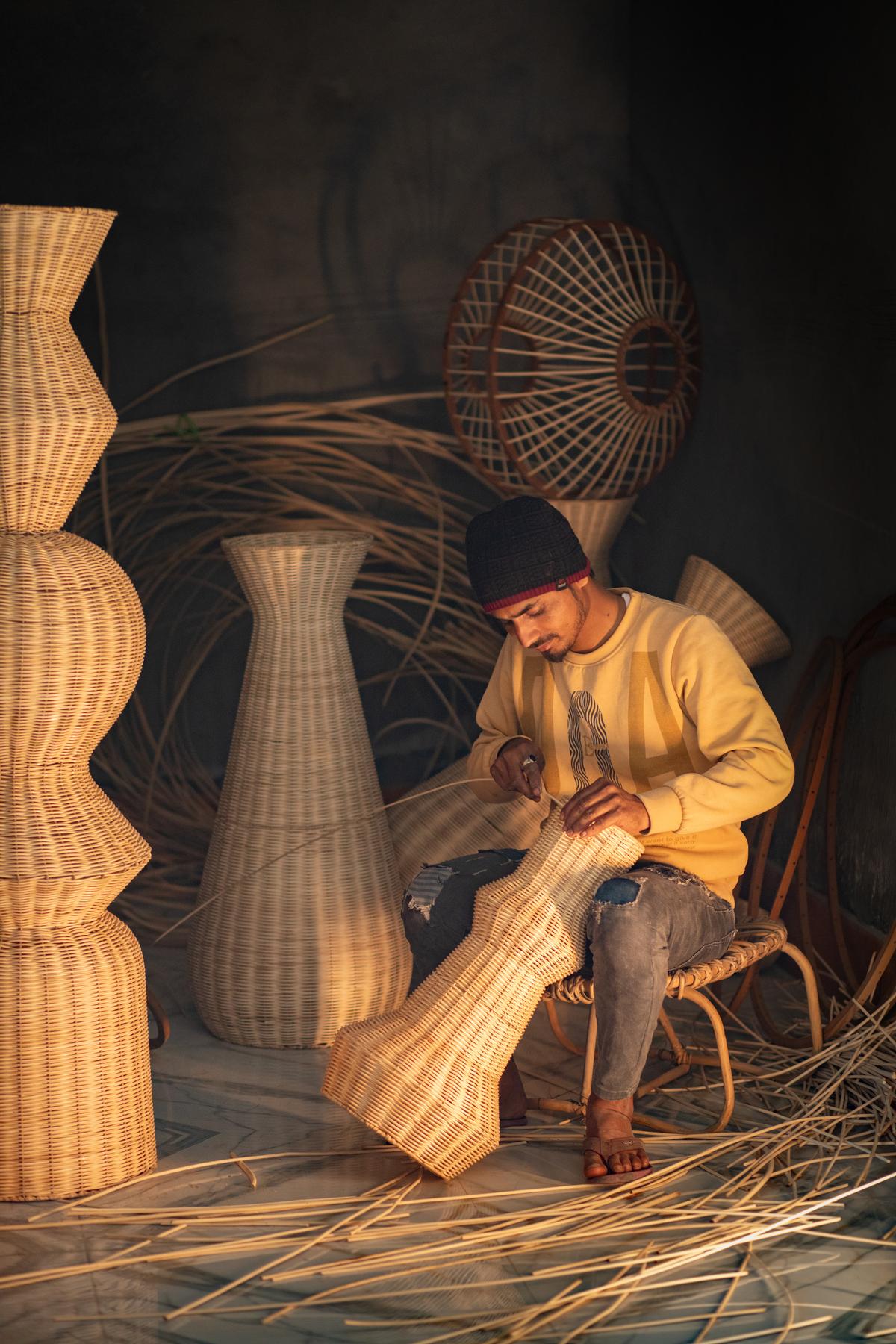
An artisan at work
| Photo Credit:
Special Arrangement
Today, she works closely wih self-help groups and craft clusters across Assam, Arunachal Pradesh, Manipur Tripura, and Himachal Pradesh to design furniture and decor from bamboo, cane, reed, pine needle and water hyacinth. “We craft bags, mirrors, baskets, coasters, lamp shades, etc., primarily working with architects and interior designers to craft installations and lighting fixtures,” says Gautam, the brand’s founder and creative director.
Most of the brand’s work is with bamboo and cane, since the materials are abundant in the North East. “Rattan is a unique material due to its exceptional strength, flexibility, and durability. Once it grows to a certain point, it bends back down to the ground, and can even grow back into the ground like vines,” explains Gautam, who says the artisans have also created complex pieces such as light installations and furniture which have taken 25-40 days to complete. “Smaller products like baskets, mirrors, wall decor take less than 10 days to complete,” says the designer, who has worked with the likes of Reliance Industries, Smoor, Sirohi, We Work, among other brands.
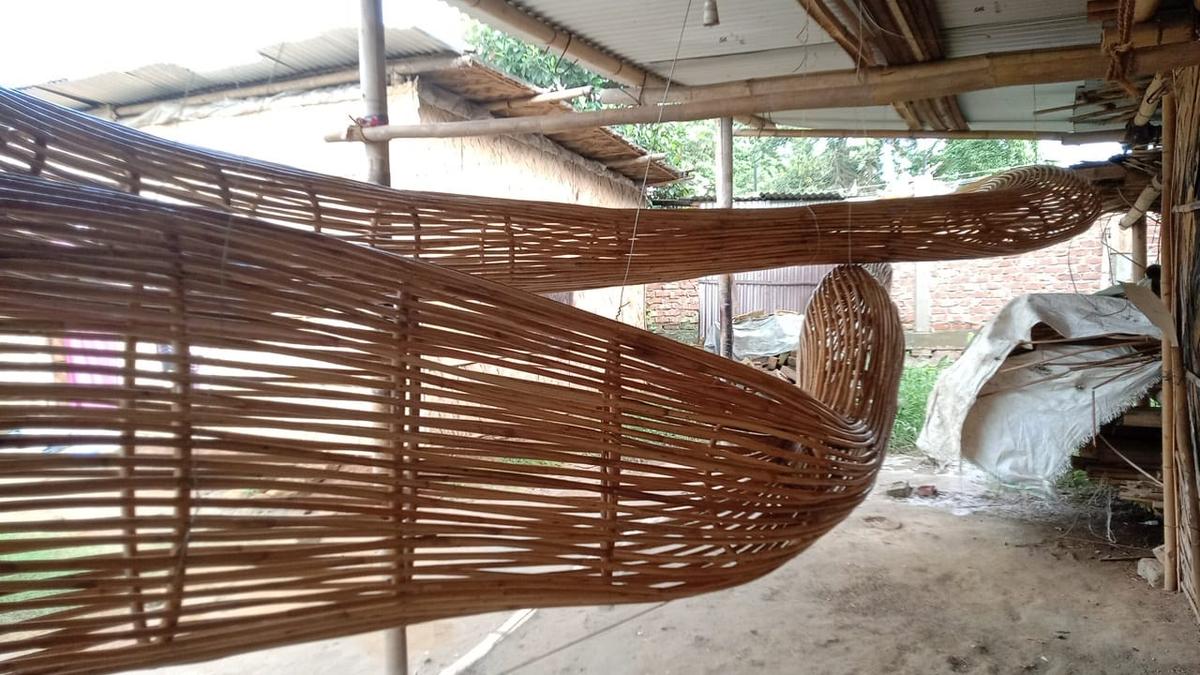
An installation designed at House of Locals
| Photo Credit:
Special Arrangement
The artisans have recently completed a custom 20 feet rattan light fixture for The Greenhouse Barbeque in Chennai that took the team a month to craft, and costs ₹85,000. Gautam says they have also designed a collection of seven “unique” rattan fixtures for a terrace bar in Guwahati which was inspired by different cursive letters. “We are currently working on flat pack furniture stools, exploring motifs on wicker panels for a lighting collection, and are looking at projects which involve basket weaving, light and furniture collection.”
houseoflocals.in
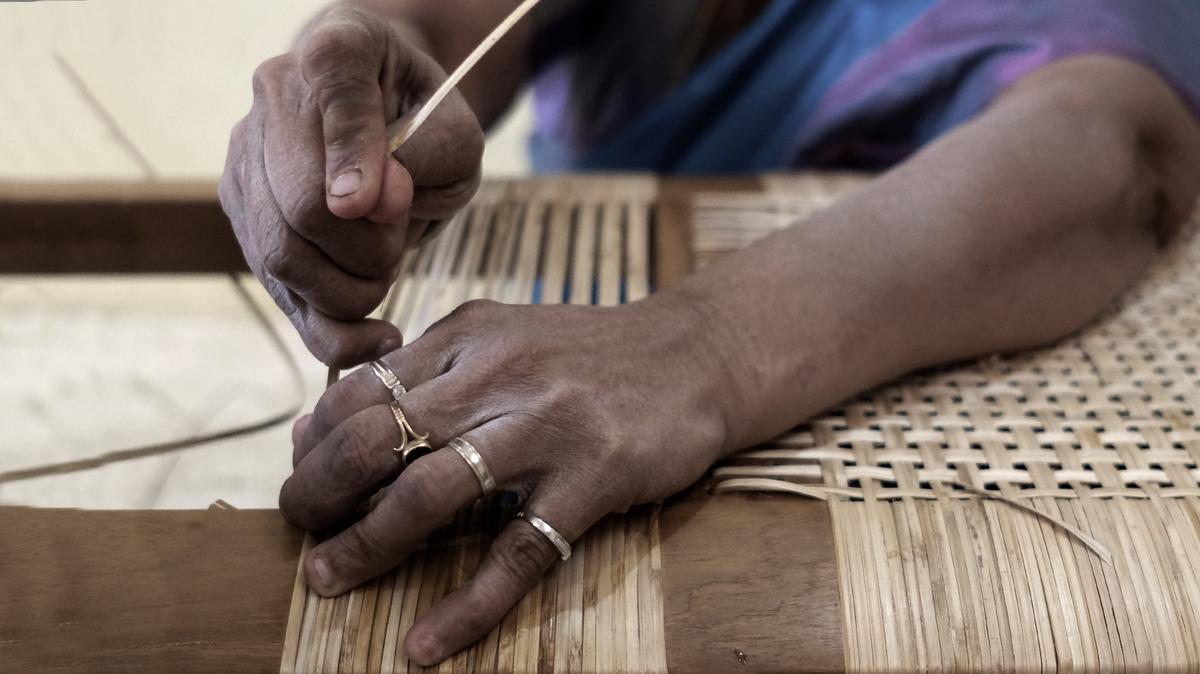
Phantom Hands runs skilling programs to train local talent.
| Photo Credit:
Special Arrangement
Phantom Hands, Bengaluru
What started off as a hobby project of putting together a monthly catalogue of curated vintage objects in 2014 soon turned into a full-fledged brand for Deepak Srinath and Aparna Rao. A year later, the duo set up a small workshop to make furniture that soon became their primary focus and the antiques’ business halted.
Today, the furniture studio plays with materials such as wood, fabrics, cane, and metal, alongside rattan. “Our cane weavers hail from traditional weaving communities of Karaikudi in Tamil Nadu, Bengaluru, and Chennai. We also run skilling programs to train local people from the area around our workshop, and now have over 15 weavers who have come through our craft apprenticeship programme,” explains Srinath, who says that since rattan is flexible, strong, and pliable, it makes for products that are long-lasting.
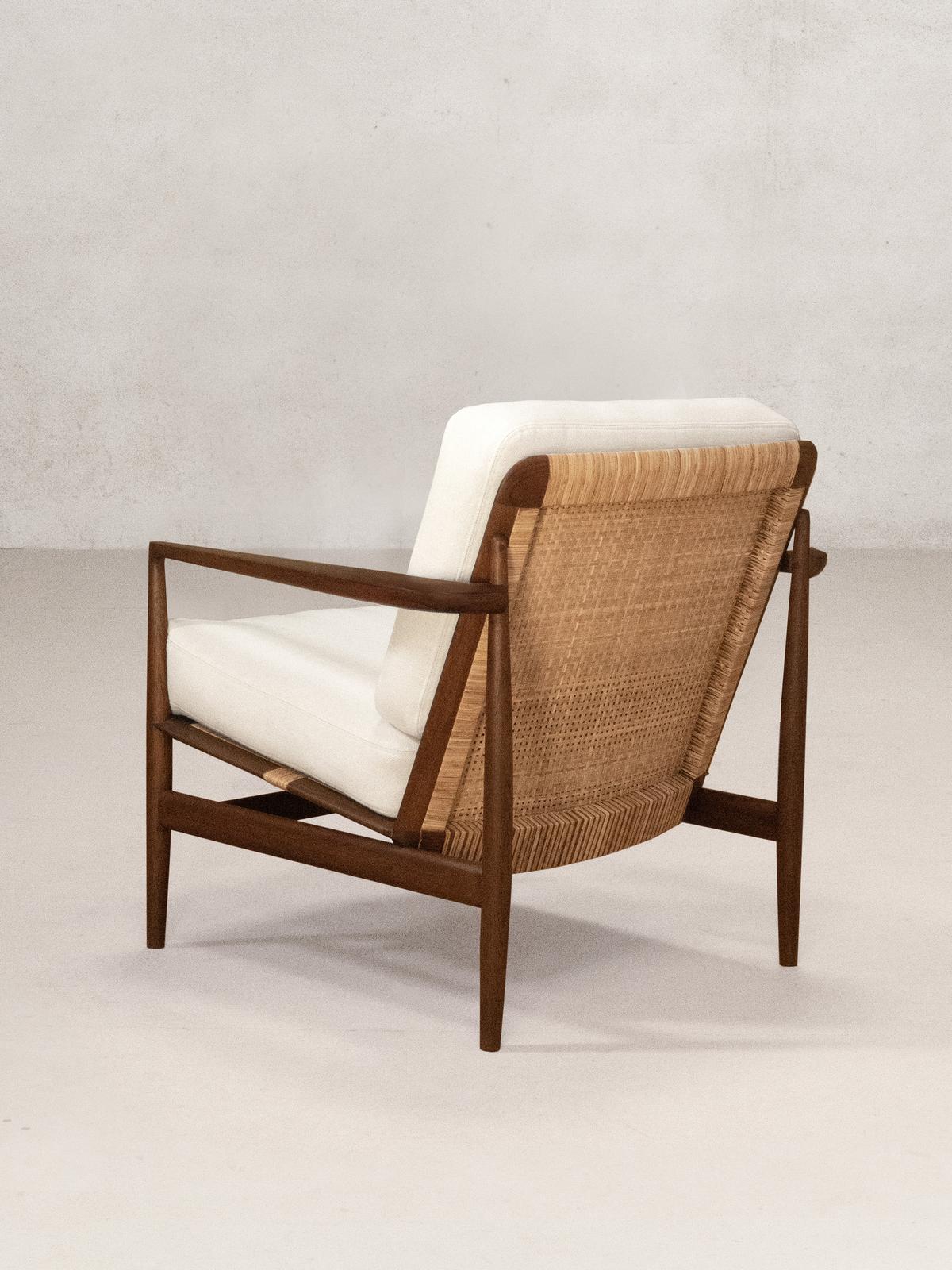
The Tangāli Comfort Chair
| Photo Credit:
Special Arrangement
Rattan, he adds, “has a signature aesthetic that is timeless”. Phantom Hands often collaborates with other designers such as couturist Padmaja Krishnan, furniture designer Derek Welsh, artist Nityan Unnikrishnan, Felix Pfäffli of Studio Feixen in Switzerland, among others. The brand’s one such collaboration with Milan’s INODA+SVEJE, a multi-disciplinary design duo comprising Kyoko Inoda (Japan) and Nils Sveje (Denmark), led to the creation of the Tangāli Collection comprising modular chairs and day beds in teak and natural cane aka rattan.

(L-R) Lars Hyling Axelsson, Deepak Srinath, Smita Kumar, Udeep Suresh, Vikranth Madabhushi and Pankaj Borthakur
| Photo Credit:
Special Arrangement
The latest launches in the range include the Tangāli Comfort Chair, Tangāli Ottoman, and Tangāli Dining Chair. “It takes anywhere from one day to three days to weave a rattan seat and back of a single piece, depending on the size of the piece and skill of the weaver,” says Srinath, who recommends oiling the surface of the cane with linseed or teak oil every six months “to ensure it remains supple and strong for a long time”.
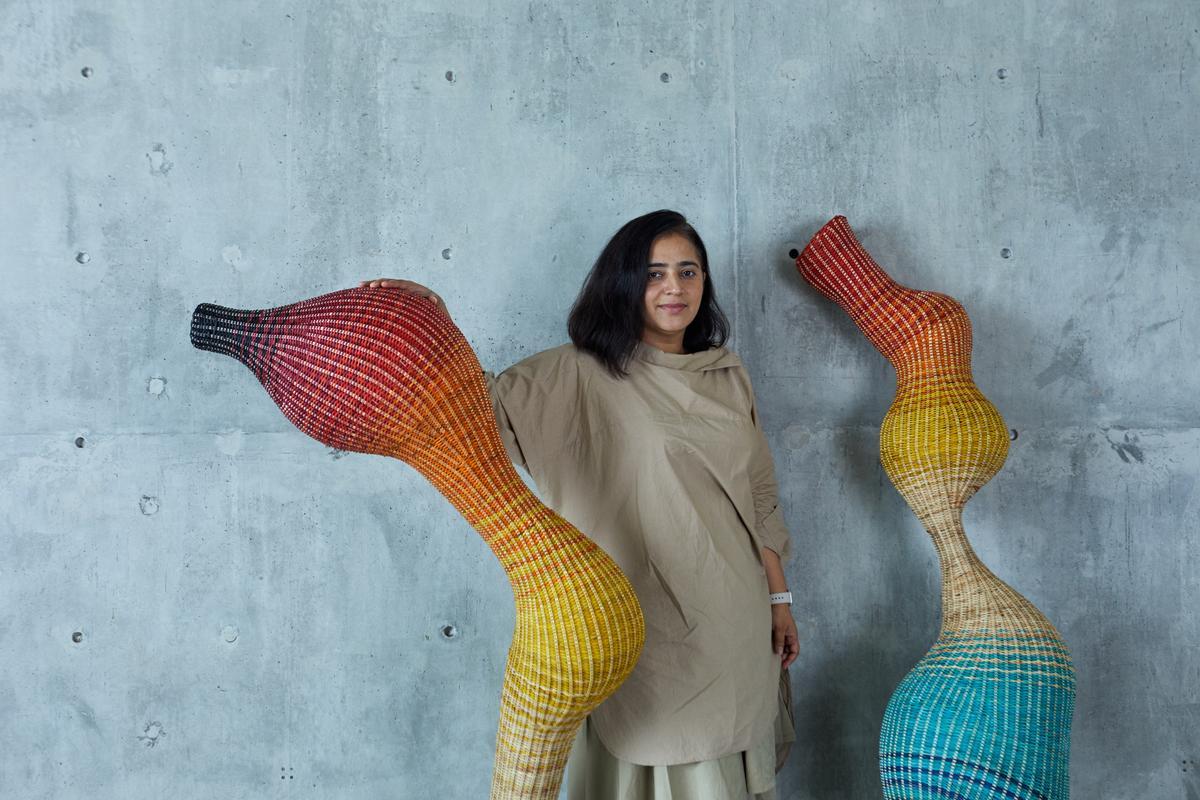
Priyanka Narula
| Photo Credit:
Sreenivas Focalpoint
The Wicker Story, Hyderabad
For architect Priyanka Narula, launching a furniture studio was a natural progression to her design career. The product design and manufacturing studio started in the year 2019 “was a response to a prolonged quest to define the future of design in the Indian context,” she says of the enterprise specialising in cane and rattan. “Cane forms the basis of our work for making frameworks, and rattan is used to create fine surface weavings. A cane reed can be used as a whole, and it can be peeled to make tar for weaving, thus no part of the material goes to waste,” she elaborates, “Also, as cane is soft and easily mouldable it yields a lot of complex and interesting shapes and designs.” At their workshop comprising 20 weavers and cane framing artisans, everything from jointless art installations, furniture, and wall art are crafted.
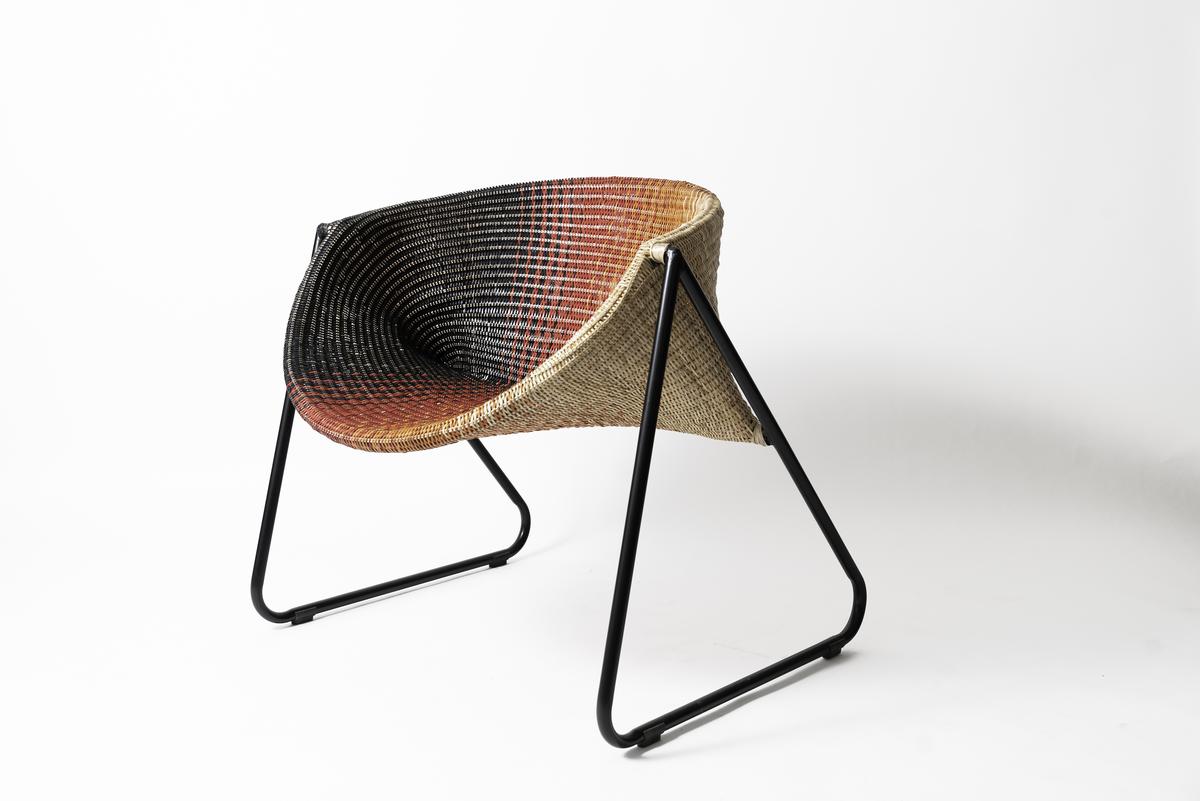
A chair designed at The Wicker Story
| Photo Credit:
Alan J Thomas
Narula’s latest collection Dawn to Dusk that launched earlier this year is inspired by Nature, “hues that capture the warmth and serenity of a setting sun”. Comprising furniture lighting fixtures, and art, the designer says she drew from traditional Indian basketry as well. “Our recent experimentations with sculptural products led us to the realisation that colour was missing in our products. This challenged us to find deeper meaning to find colour expression in rattan,” says Narula of the range in shades of red, orange, yellow, blue, beige, and green.
The products are meant for indoor use, she adds, as they are constructed primarily with natural cane and rattan, “due to this nature the products are advised to be kept away from water and direct sunlight”.
thewickerstory.com
From the Gonsalves collection
| Photo Credit:
Special Arrangement
AKFD Studio, Jaipur
Ayush Kasliwal, the founder of the furniture and home accessories studio — known for its work with materials such as wood, metals, stones, ceramics, etc. — started working with rattan in the early 90s. This was during his years studying at NID, Ahmedabad, where he experimented with shelving units and racks.
Rattan’s processing typically includes removing the outer bark and occasionally soaking or steaming the rattan to enhance its flexibility before it is woven or shaped into final products. “We can create numerous patterns for binding purposes with rattan. Its blend of flexibility, durability, sustainability, and its aesthetic appeal makes it a unique and desirable material for a range of uses,” adds Kasliwal whose brand catalogue with rattan comprises lounge chairs, dining chairs, and sofas.
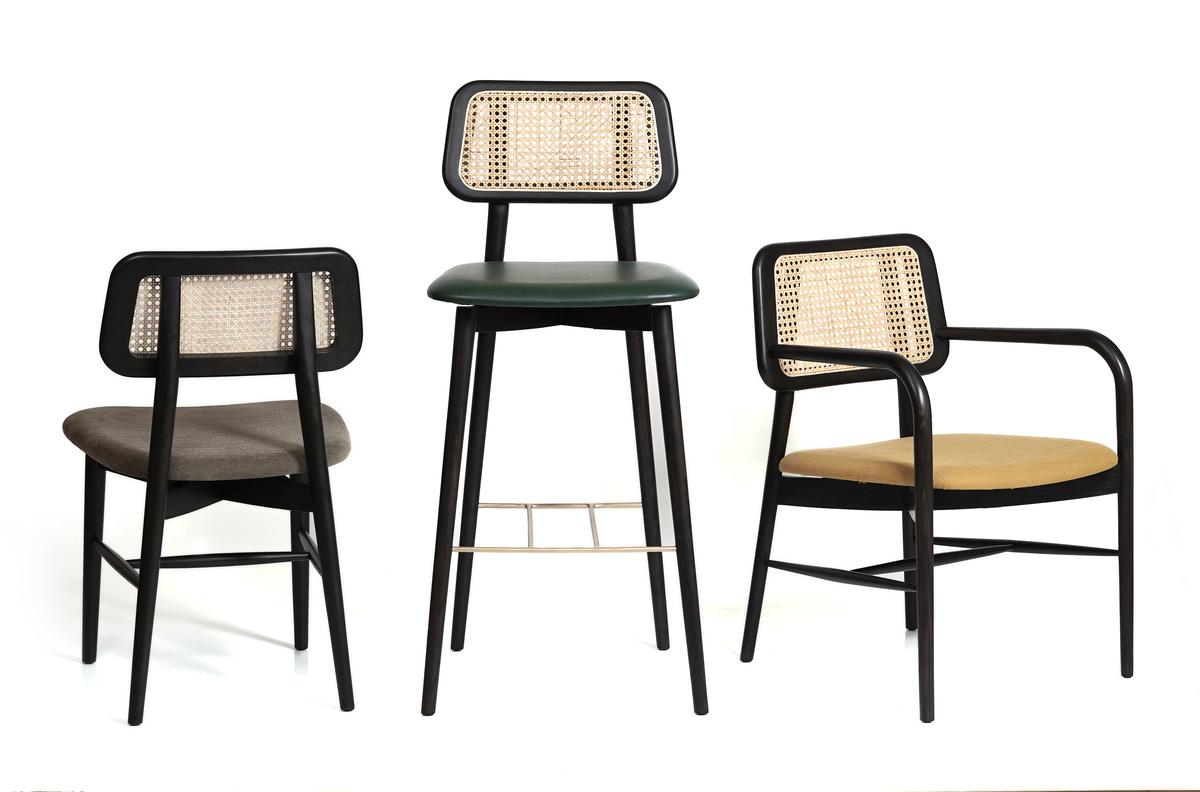
The Sled range of chairs
| Photo Credit:
Special Arrangement
Kasliwal points out that rattan primarily consists of the fibrous outer bark and the flexible inner core of rattan palm stems. “Due to its organic composition, rattan can become loose over time. To care for rattan products, handle them gently and avoid applying concentrated pressure, clean them regularly, and apply wax. As rattan ages, it may require reworking to restore its condition,” he says.
Their latest launches with the material include the Gonsalves (chairs), Taurus (sofa and sofa chairs), and the Sled range of chairs.
akfdstudio.com
Published – September 13, 2024 02:55 pm IST





